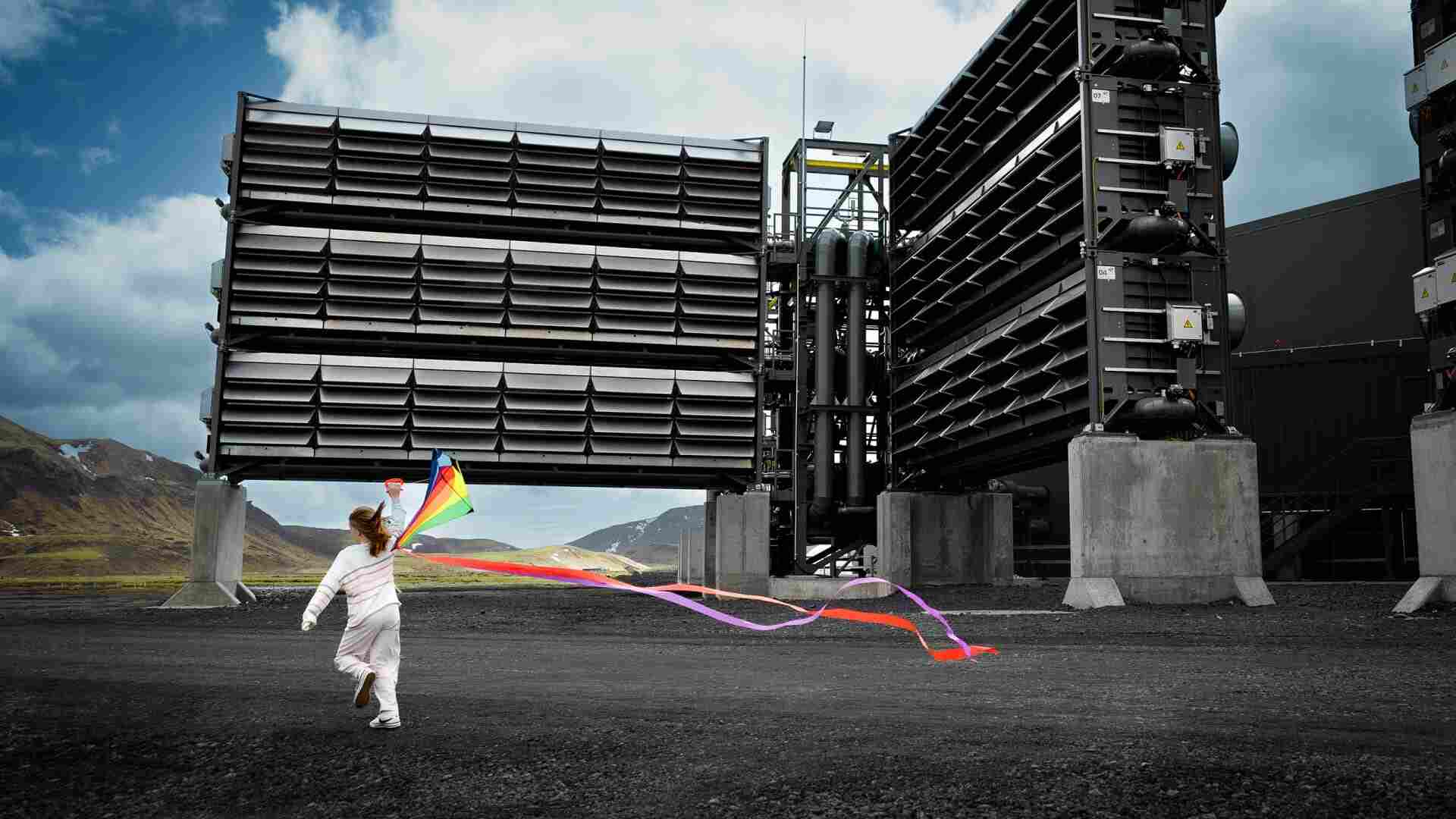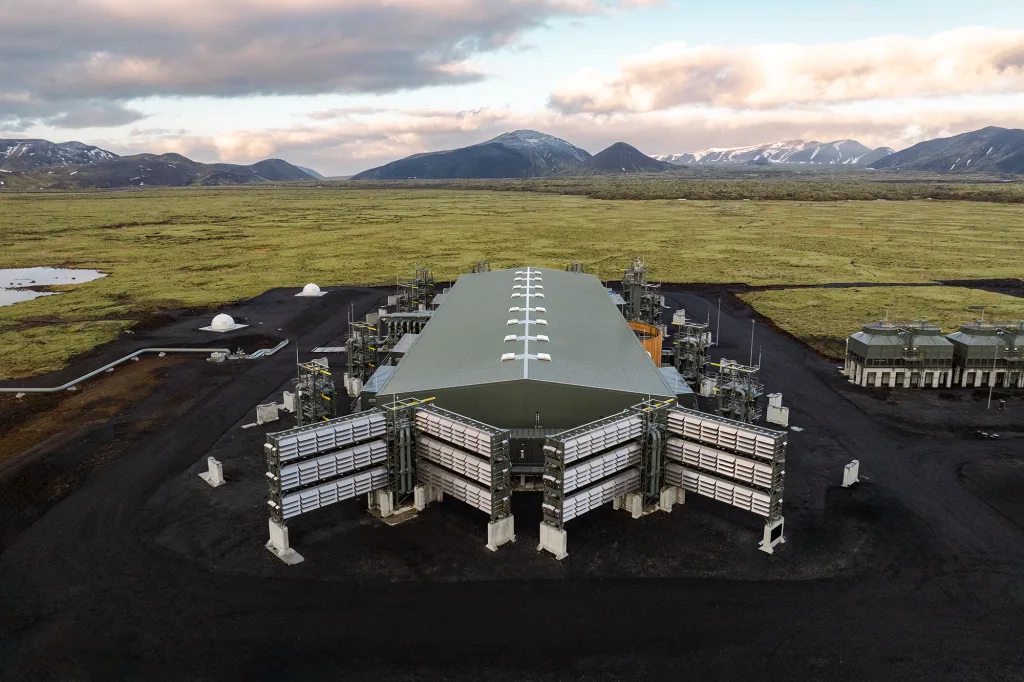- | 8:00 am
The world’s biggest carbon removal factory just opened in Iceland
By the end of the year, Climeworks’ plant will have the capacity to capture around 36,000 tons of CO2 per year.

In 2021, the first large-scale carbon removal plant started sucking CO2 from the air in a remote corner of Iceland. Now Climeworks, the company behind it, has opened a version that’s 10 times larger. It’s the biggest of its kind in the world.
Inside shipping-container-size boxes, fans pull outside air through filters that capture the CO2. The process runs on renewable energy from a neighboring geothermal plant. After the CO2 is captured, a company called Carbfix dissolves it in water and pumps that deep underground, where it naturally reacts with basalt rocks and turns permanently into stone.

The new plant, called Mammoth, has installed 12 modular containers so far. By the end of the year, it will have 72, with the capacity to capture around 36,000 tons of CO2 per year. (The work is funded by selling carbon removal as a service to companies like Microsoft and Stripe.) That’s significant—Orca, the first plant, captures around 4,000 tons. But it’s still a tiny amount of the pollution that humans pump into the air each year: around 40 billion tons.
The company is racing to scale up, using what it learns from each installation to help improve the next, in a process that CEO Christoph Gebald calls “deployment-led innovation.” In the U.S., it’s working on three projects that are each designed to capture at least one million tons of CO2 a year. It’s also developing new projects in Canada, Norway, and Kenya.

The tech is expensive, though the falling cost of renewable energy can help, and as Climeworks builds more, the cost will continue to come down. “The one key enabler to lowering our cost curve is industrial scaleup,” Gebald told Fast Company in an earlier interview. “And to be an effective solution to fight the climate crisis, an entire carbon removal industry will need to develop over the next 10-20 years, creating capacities of gigatons of carbon removal by 2050.”
Other companies are taking a variety of different technological approaches to pulling CO2 from the air. Heirloom, one startup, uses powdered rock dust to suck up carbon. Some researchers are working on passive systems that can capture CO2 and release it for storage without using large amounts of energy.

To tackle climate change, humanity’s biggest challenge is eliminating emissions across every aspect of society, from transportation and power plants to food. But carbon removal is also necessary to meet climate goals. “The science is clear to have a chance at meeting the temperature targets outlined in the Paris Agreement, the world must remove several billion tons of carbon dioxide from the atmosphere by 2050 at the latest,” says Gebald. “And while emission reductions remain the top priority, reaching net zero in 2050 and beyond is impossible without active carbon removal.”
“The sheer size of the challenge can’t be met by one single carbon removal solution but can only be done if we start scaling the most promising, scalable, and efficient solutions at once,” he says. “The good mix is certainly made up of both nature-based and tech-driven solutions. Unfortunately, scaling an industry to a gigaton scale cannot be done overnight. This is why we need to start today, and we need to not lose momentum until 2050, so that we can meaningfully remove carbon from the atmosphere when the world will need it most.”






































